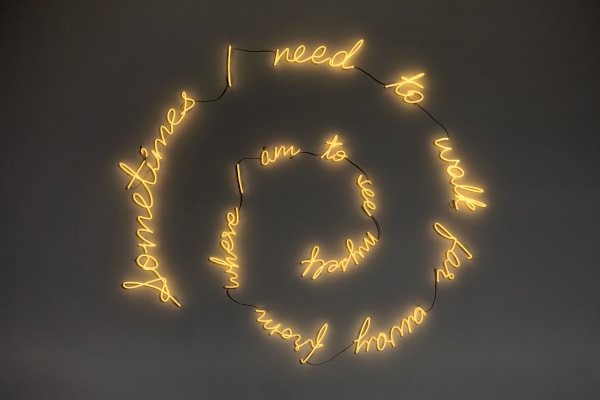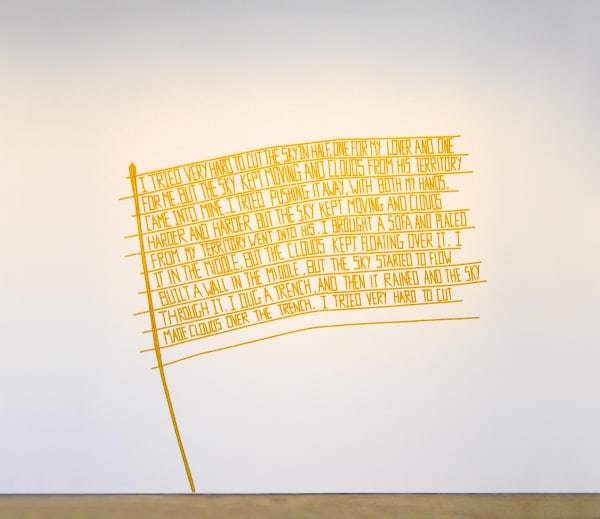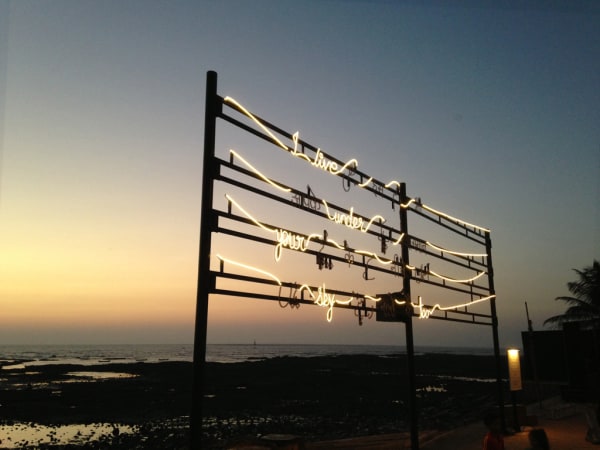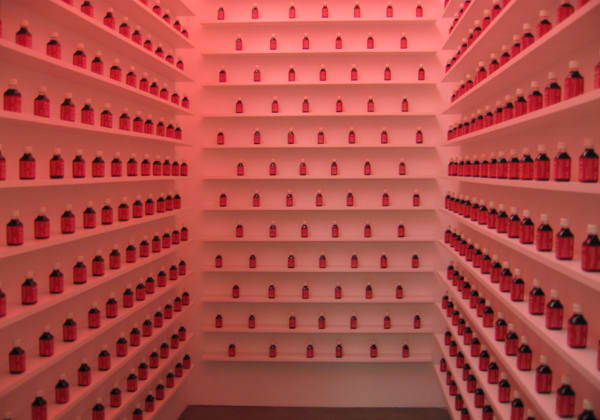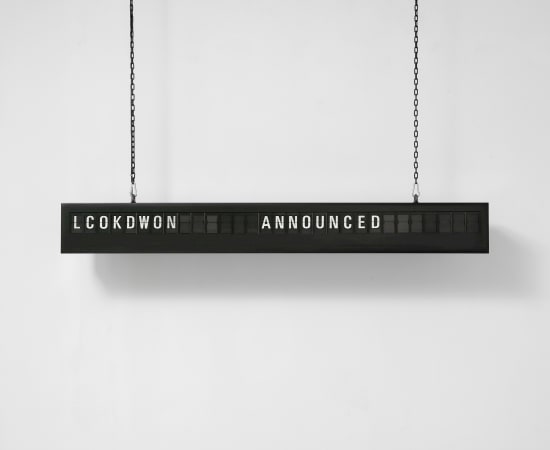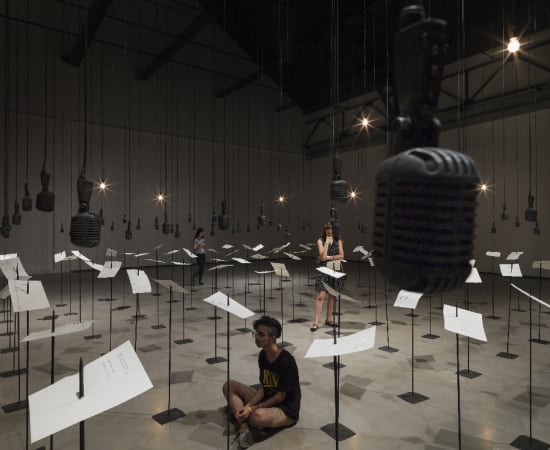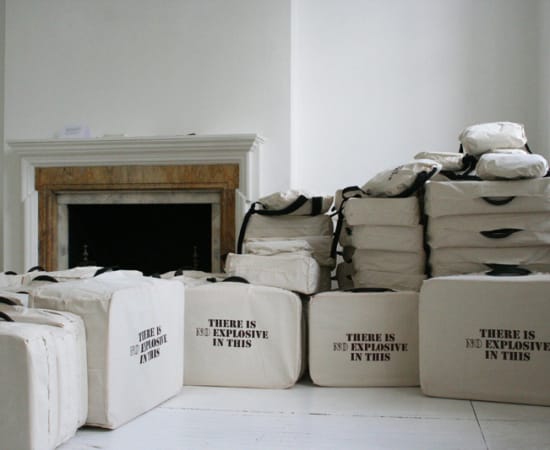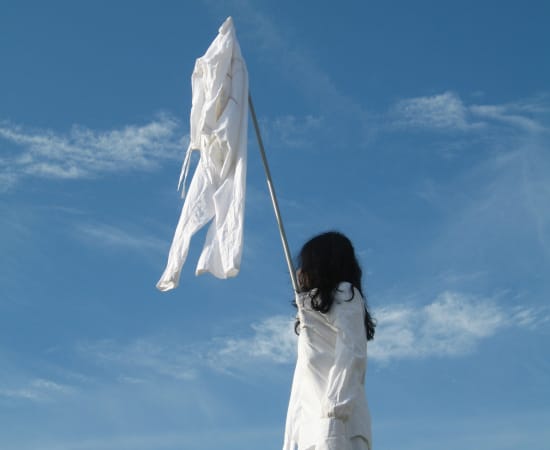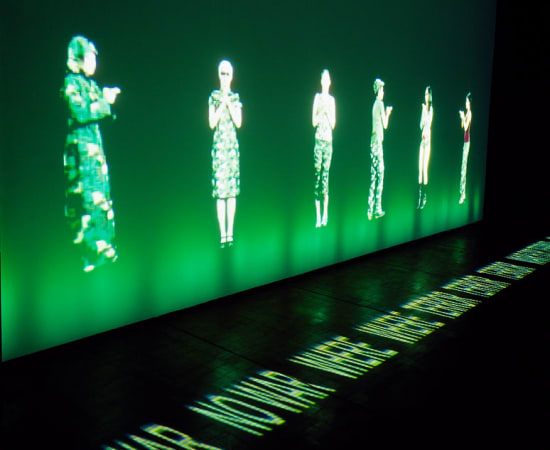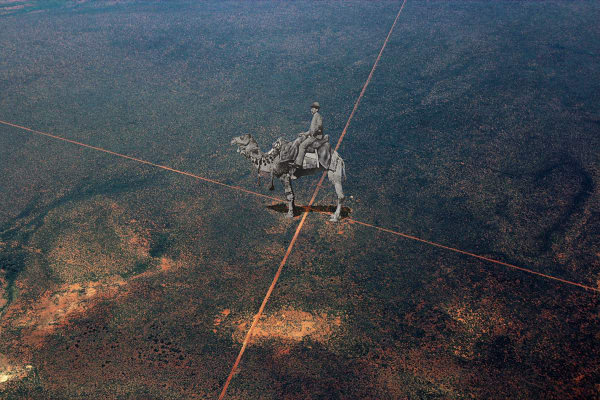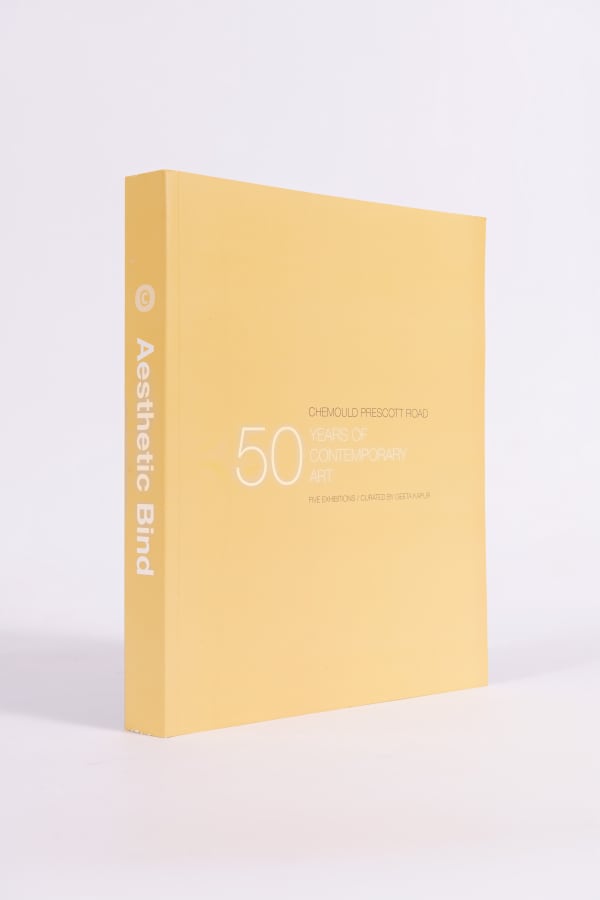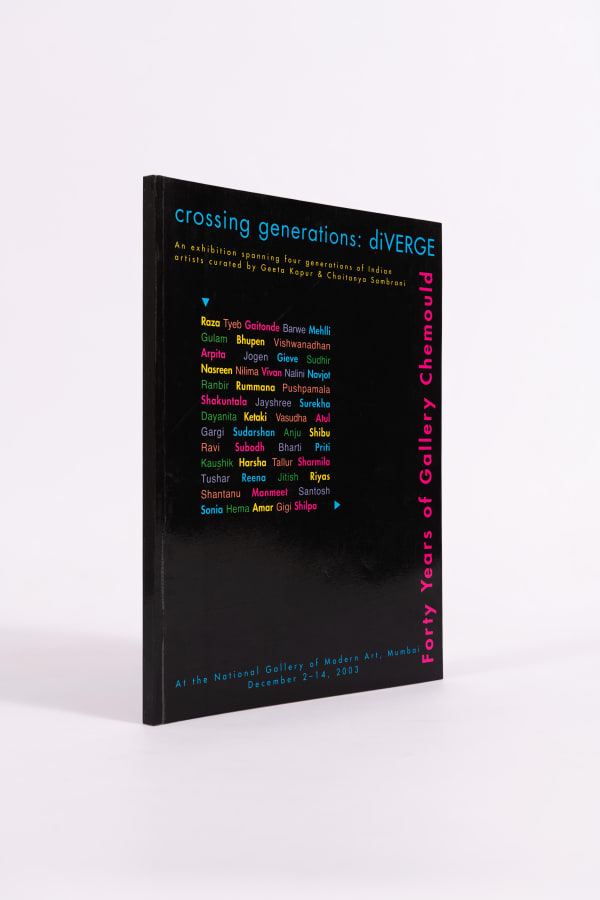Shilpa Gupta b. 1976
-
 WEARECLOSERTHANYOUEVERIMAGINED, 2020
WEARECLOSERTHANYOUEVERIMAGINED, 2020 -
 Sometimes I need to walk far away from where I am to see myself, 2019
Sometimes I need to walk far away from where I am to see myself, 2019 -
 For, in your tongue, I cannot fit, 2017-2018
For, in your tongue, I cannot fit, 2017-2018 -
 Untitled (Smoke Series), 2016
Untitled (Smoke Series), 2016 -
 I will die, 2012
I will die, 2012 -
 Someone Else - A library of 100 books written anonymously or under pseudonyms, 2011
Someone Else - A library of 100 books written anonymously or under pseudonyms, 2011 -
 There is No Explosive in This, 2007
There is No Explosive in This, 2007 -
 Untitled (Wives of the Disappeared), 2006
Untitled (Wives of the Disappeared), 2006 -
 There is No Border here, 2005-2006
There is No Border here, 2005-2006 -
 Untitled, 2004-2005
Untitled, 2004-2005 -
 I live under your sky too, 2004 - ongoing
I live under your sky too, 2004 - ongoing -
 Blame, 2002
Blame, 2002
I am interested in perception and therefore, with how definitions get stretched or trespassed, be it gender, beliefs, or the notion of a state.
-Shilpa Gupta
b. 1976, in Mumbai, India
Shilpa Gupta is a Mumbai-based artist whose works reckon with questions of identity, power-structures, and perceptions of world order. As a student at the Sir JJ School of Art in the 1990s, she witnessed the Bombay riots that exposed the prevalent sectarianism in post-partitioned India, challenging the cosmopolitan ideals that she was raised with in the city. Stemming from this disillusioning moment, and her experiences at sensitive-border regions in Kashmir and Bengal, Gupta’s artworks respond to the boundaries, signposts, texts, or labels that codifypeople, places, and objects. By exploring how constricting structures might be expanded or transgressed, she intimately probes universal concerns surrounding freedom, security, and collective memory.
In an early 1995-96 work, Gupta posted 300 ink-drawings anonymously to people in her city. Each drawing was stamped and numbered, situating it in relation to those preceding and succeeding it, to make participants consider notions of belongingness, authenticity, and time. Entrenched in negotiations of chance, mobility, and fluidity, as well as the politics of naming and assigning value to things, the work set the tone for ideas she investigates across her practice. In a subsequent work, Untitled (Prove that you care) (1997), she invited visitors to create personal memory boxes of their loved ones through bodily remnants and unclaimed everyday items, confounding conceptions of attachment, memory, and the archive. The work deliberated how memories may be assorted through objects that are ostensibly generic but laden with subjective associations. Gupta is renowned for deftly transforming the mundane into conceptual artworks that scrutinise the human experience and subvert premises of conflict.
Her participatory works make audiences think critically about social behaviour. For instance, in 2000, Gupta filled bottles, labelled Blame with simulated blood that she peddled on commuter trains, posing as a salesperson. She challenged mechanisms that inculpate those considered ‘other’ by asking people to perform the impossible task of separating the ingredients within the bottle based on markers such as religion or nationality. In a 2007 exhibition in London, she covered bags in fabrics marked with the text “There is No Explosive in this". Visitors were encouraged to carry these into public spaces, confronting suspicious gazes and discerning how societal anxieties are constructed. In a 2008-9 exhibition featuring a sculpture consisting of 2,400 bars of soap, each engraved with the word Threat, she invited participants to take a bar away, negotiating how fear, a manipulative tool, could be dismantled or washed away.
Gupta’s works frequently respond to the apathy and abuse of power that the State demonstrates towards those who speak up during political unrest —by not only obliterating them physically, but also from public records. In her seminal 2006 installation, Untitled (Wives of the Disappeared), viewers waded through a sea of suspended garments belonging to victims of insurgencies in Kashmir. These garments featured numbers stitched on them, representing those registered officially as well as known unofficially, as dead or missing. The clothes were exaggerated to account for the possible conditions in which the missing might return — amputated, with overgrown limbs, scarred, or dead. The work also featured a video of woman, Gupta herself, holding a flag to commemorate the deceased. Continuing her explorations of performativity, while condemning politically-controlled media that dictate perceptions of reality, Gupta also employs bureaucratic apparatus to magnify silenced issues. Singing Cloud (2008-9), an amorphous hanging sculpture composed of thousands of microphones amplified the voices of those that rise up against the landscapes of fear, cultivated through systems of control that cement divides between people.
Highlighting the futility of political divisions, Gupta’s works often juxtapose ideas of empirical measurement used to construct border lines, against ground reality. In 100 Hand Drawn Maps of India (2008-9), she asked people to draw maps of their countries, revealing how each person remembers the shape differently. Contrasting this incongruence, 1:14.9 (2011-12), at the Solomon R. Guggenheim Museum, New York, features a neat ball of thread that she wound at a fixed ratio to ironically signify the mathematically-constructed fenced border between India and Pakistan. In a similar vein, her 2015 installation as part of her celebrated My East is Your West exhibition in Venice, featureda performer drawing lines on a piece of cloth, proportionate in length to a newly proposed Indo-Bangladesh border. Challenging arbitrary boundaries continuously, Gupta’s text-based work, There is No Border Here (2005-6), exhibited around the world, emphasises the absurdity of political lines in light of shared elements like the sky.
Poetic texts, ideas surrounding the politics of language, and notions of illegibility recur in Gupta’s works. In a public installation in Mumbai, she represented her titular text, I live under your sky too (2004 - ongoing), in English, Urdu, and Hindi. Her interest in the power of the written word is evidenced most profoundly in In Your Tongue, I Cannot Fit (2018), an installation displayed at the Kochi-Muziris Biennale (2018-19) and the Venice Biennale (2019). The work gave voice to 100 poets from around the world who were imprisoned for their principles, to emphasise the tenuousness of the freedom of expression and the valour of those who resist.
Gupta’s second installation, Untitled (2008-09), at the Venice Biennale featured a mechanical gate, swinging back and forth aggressively to eventually crack and break the wall it was installed against. Vigorously expressing the need to shatter ideological confines, the work succinctly encapsulated Gupta’s practice that remains poetic, even as she transforms commonplace situations into provocative gestures. She reminds us to recognise the structures that manoeuvre our lives.
The artist lives and works in Mumbai, India.
-

In the making: Drawing, Refining, Revising
Group Show 2 Aug - 3 Sep 2024In the Making: Drawing, Refining, Revising is a group exhibition where we have brought together 15 artists from the gallery to whom drawing is the essence of studio life: a...Read more -

Part 2 - Futuring | CheMoulding: Framing Future Archives
Curated by Shaleen Wadhwana | 60 Years of Gallery Chemould 15 Nov - 23 Dec 2023Futurists actively view the present world as a window to possible future outcomes. By this definition, we are all futurists. However, in reality, actively viewing the present means to confront...Read more -

On|Site | Entry Only
Group show 3 - 9 Mar 2021A collaborative project between four galleries at Bikaner House, New Delhi. Bikaner House, a former residence of the Maharaja of Bikaner in Rajasthan, retains its grand aura of a distinguished...Read more -

SOUTH SOUTH VEZA
Group show 24 Feb - 2 Mar 2021SOUTH SOUTH is an online community, an anthology, an archive and a resource for artists, galleries, curators and collectors invested in the Global South. In the often disputed battleground of...Read more -

Photo / Concept
Group show | In-Touch Edition II 5 Jun - 5 Jul 2020Read more -

Modus Operandi
Group Show 13 Jul - 18 Aug 2018This July, Chemould Prescott Road presents Modus Operandi , a show that has been devised by Shireen Gandhy and the Chemould team, brin ging together a large number of Chemould...Read more -

Access Time
Group show 9 - 23 Mar 2017Curated by Devika Daulet-Singh Chemould Prescott, Mumbai is pleased to present a group exhibition of black & white photographs, Some Portraits curated by Devika Daulet Singh in collaboration with PHOTOINK....Read more -

Aesthetic Bind: Citizen Artist: Forms of Address
50 Years of Chemould | Group Show 14 Oct - 15 Nov 2013The exhibition Citizen Artist: Forms of Address is the second of 5 exhibitions curated by Geeta Kapur, celebrating 50 years of Chemould. Gallery artists, Jitish Kallat, Rashid Rana, Shilpa Gupta,...Read more -

Someone Else
Shilpa Gupta 21 Jan - 16 Feb 2012Masquerading as seven different avatars decked out in camouflage, or identifying with Kashmiri women whose husbands have gone missing, the performing of other selves has been a consistent stratagem in...Read more -

crossing generations: diVERGE
40 Years of Chemould | Group Show 2 - 14 Dec 2003diVERGE is premised on the polyphony articulated by contemporary artists in India. Rather than zooming in to chart a convergent discourse, the exhibition pans over a diverse spectrum of subjectivities...Read more
-
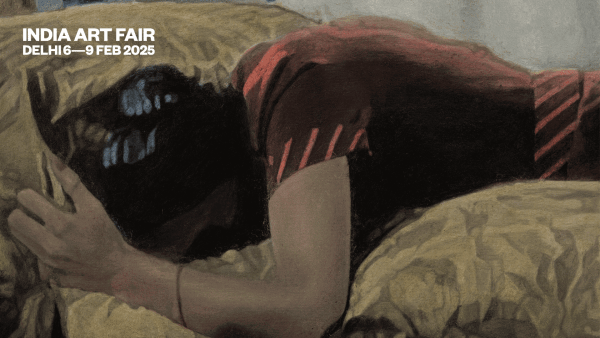
India Art Fair 2025 | Chemould Prescott Road
New Delhi 6 - 9 Feb 2025Public days: Feb 6 - 9, 2025 We look forward to welcoming you once again in person to our booth at India Art Fair 2025....Read more -
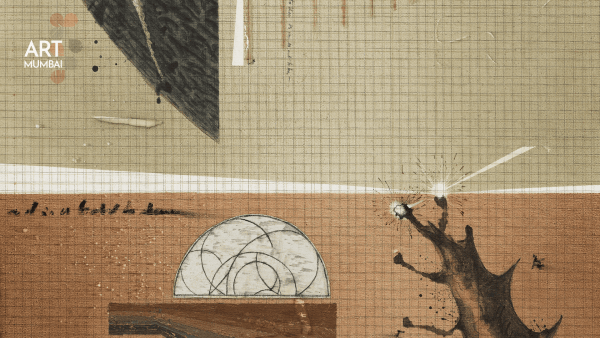
Art Mumbai 2024
Mumbai 14 - 17 Nov 2024Booth 28 Public days: NOV 16 - 17, 2024 We look forward to welcoming you once again in person to our booth at Art Mumbai...Read more -

India Art Fair 2023
New Delhi 9 - 12 Feb 2023Booth B2 Public days: Feb 9 - 12, 2023 We look forward to welcoming you once again in person to our booth at India Art...Read more -

Art Basel 2022
Basel, Switzerland 13 - 19 Jun 2022Booth J10 Public days: Jun 13 - 19, 2022 We look forward to welcoming you once again in person to our booth at Art Basel...Read more -

India Art Fair 2022
New Delhi 28 Apr - 1 May 2022This year we look forward to returning to India Art Fair; presenting new works across multiple mediums created by nine of the gallery artists. Anju...Read more -

Art Basel 2020
Online 17 - 26 Jun 2020Online Viewing Room Public days: June 19 - 26, 2020 VIP Preview: June 17 - 19, 2020 To access the Online Viewing Rooms, create an...Read more -

Art Basel 2019
Basel, Switzerland 12 - 16 Jun 2019Public days: June 12 - 16, 2019 Chemould Prescott Road has a roster of senior, mid-career and young artists who have been part of the...Read more -

Art Basel Hong Kong 2019
Hong Kong 29 - 31 Mar 2019Public days: March 29 - 31, 2019 Chemould Prescott Road has a roster of senior, mid-career and young artists who have been part of the...Read more -

Art Basel 2017
Basel, Switzerland 15 - 18 Jun 2017Public days: June 15 - 18, 2017 Chemould Prescott Road has a roster of senior, mid-career and young artists who have been part of the...Read more -

Art Basel 2016 Unlimited
Basel, Switzerland 16 - 19 Jun 2016Public days: June 16 - 19, 2016 Chemould Prescott Road has a roster of senior, mid-career and young artists who have been part of the...Read more -

Art Basel 2015
Basel, Switzerland 18 - 21 Jun 2015Public days: June 18 - 21, 2015 Chemould Prescott Road has a roster of senior, mid-career and young artists who have been part of the...Read more -

Art Basel Hong Kong 2015
Hong Kong 15 - 17 Mar 2015Public days: March 15 - 17, 2015 Chemould Prescott Road has a roster of senior, mid-career and young artists who have been part of the...Read more -

Art Basel 2013 Unlimited
Basel, Switzerland 13 - 16 Jun 2013Public days: June 13 - 16, 2013 Chemould Prescott Road has a roster of senior, mid-career and young artists who have been part of the...Read more -

Art Basel Hong Kong 2013
Hong Kong 23 - 26 May 2013Public days: March 15 - 17, 2015 Chemould Prescott Road has a roster of senior, mid-career and young artists who have been part of the...Read more -
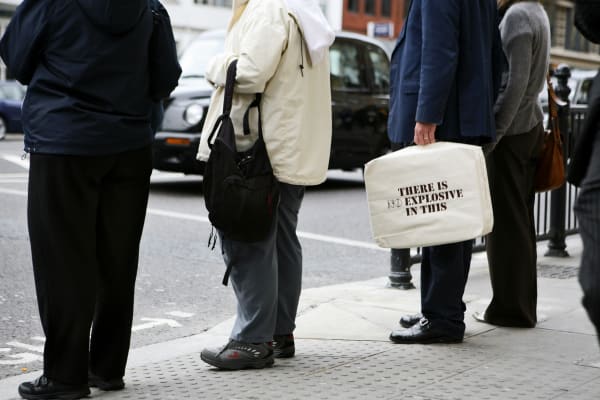
Art Basel Miami 2012
Miami Beach 6 - 9 Dec 2012Public days: Dec 6 - 9, 2012 Chemould Prescott Road has a roster of senior, mid-career and young artists who have been part of the...Read more -

Art Basel 2012 Unlimited
Basel, Switzerland 14 - 17 Jun 2012Public days: June 14 - 17, 2012 Chemould Prescott Road has a roster of senior, mid-career and young artists who have been part of the...Read more

